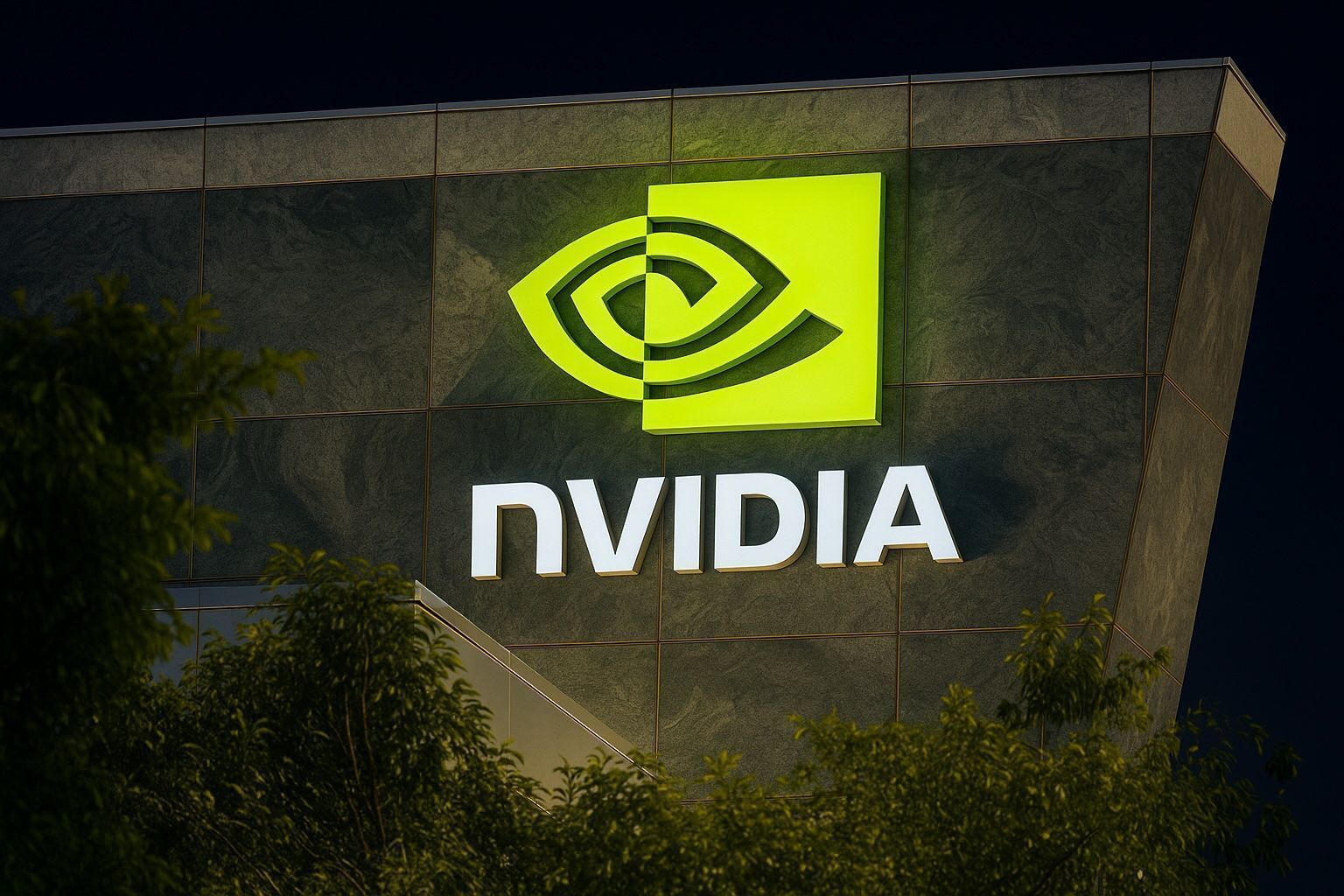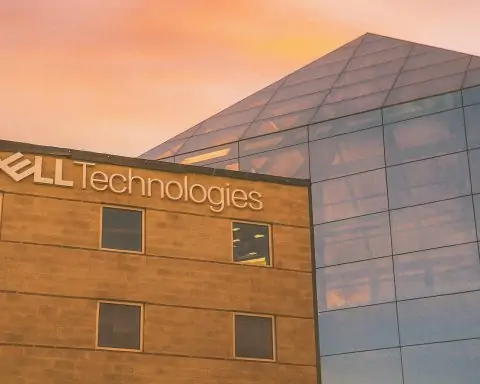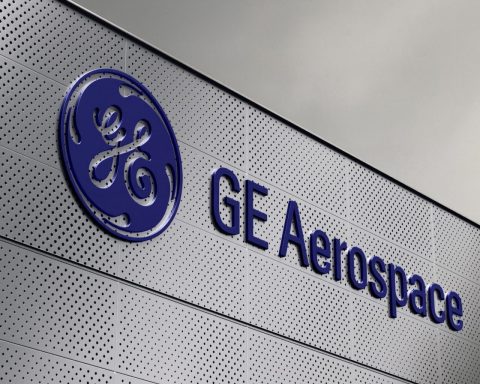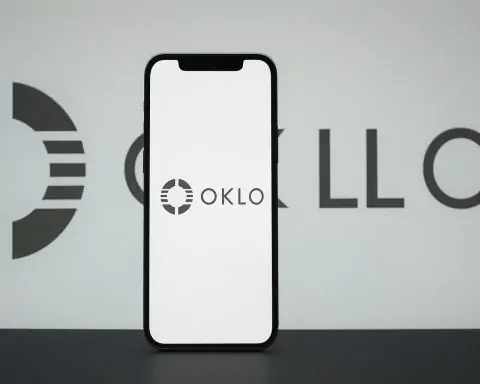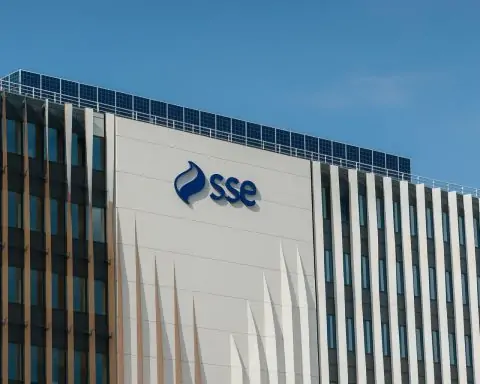All Major News and Developments About NVIDIA as of November 3, 2025
- Historic $5T milestone: Nvidia became the first company ever to top a $5 trillion market capitalization this week as its stock surged amid frenzied demand for AI chips [1]. Shares are up over 1000% since late 2022 [2], turning the once-niche GPU maker into the world’s most valuable company.
- AI super-deals drive growth: CEO Jensen Huang announced $500 billion in new AI chip orders and plans to build seven supercomputers for the U.S. government [3]. Nvidia is also investing $1 billion in Nokia for 6G networks [4] and partnering with Samsung, Hyundai, SK Group and others to deploy 260,000 GPUs across South Korea [5] [6].
- Trump’s export ban threat: U.S. President Donald Trump vowed Nvidia’s most advanced “Blackwell” AI chips will be reserved for American companies only [7]. In a 60 Minutes interview, Trump said “we don’t give [the Blackwell] chip to other people,” signaling tighter export curbs on AI semiconductors to China and even U.S. allies [8].
- Geopolitical chess match: Nvidia’s China business has ground to zero amid U.S.-China tech tensions [9]. Trump hinted at a U.S.–China chip deal but ultimately didn’t discuss Blackwell sales with Xi Jinping [10]. Huang is lobbying that selling chips to China is in America’s interest [11], even as Beijing pushes its own Huawei chips [12].
- Stock on fire: Nvidia’s stock (NVDA) trades around $202 per share [13] – roughly a 12-fold jump since 2022 [14] and up ~43% year-to-date [15]. The rally added billions to Huang’s wealth (now ~$179B) [16] and lifted peer tech giants Apple and Microsoft to $4 trillion valuations [17]. Analysts still see upside, calling Nvidia “the best way to play the AI theme” [18], though some warn of bubble risks [19].
- Blowout earnings fueling optimism: Nvidia just posted $46.7 billion in Q2 revenue – more than triple year-ago levels – as AI chip demand smashed records [20]. Its next earnings report on Nov. 19 is highly anticipated [21], with Wall Street expecting growth to remain sky-high (albeit slowing from earlier triple-digit surges [22]).
- Future outlook: Experts say Nvidia’s dominance in the AI “gold rush” looks secure for now. Bulls project its annual sales could approach $285 billion as soon as next year [23], and the company itself eyes a $3–4 trillion market for AI hardware by 2030 [24]. But sustaining its lead will require navigating rising competition (AMD, startups) [25] and volatile geopolitics, even as the AI revolution transforms every industry.
Stock Hits $5 Trillion Amid an AI Frenzy
Nvidia’s market value soared past $5 trillion on October 29, making it the first publicly traded company to achieve that mark [26]. This Wall Street milestone reflects how central the Silicon Valley chipmaker has become to the global AI boom – “from chip maker to industry creator,” as one analyst put it [27]. The stock rallied after a string of announcements reinforced Nvidia’s dominance in AI, closing that day up 3% at a record ~$207 (post-split) per share [28]. Shares briefly hit $209.40 intraday [29], and have climbed over 1080% since the launch of OpenAI’s ChatGPT ignited the AI frenzy in late 2022 [30]. (For comparison, the S&P 500 rose ~69% in that period [31].)
This meteoric rise has cemented Nvidia as the world’s most valuable company, vaulting past longtime leaders like Apple and Microsoft (each around $4 trillion) [32]. It has also turned co-founder and CEO Jensen Huang into one of the planet’s richest individuals – his personal stake is now worth about $179 billion [33]. “Nvidia hitting a $5 trillion market cap is more than a milestone; it’s a statement,” said Matt Britzman of Hargreaves Lansdown, noting the company has “gone from chip maker to industry creator” and remains “one of the best ways to play the AI theme” [34].
Enthusiasm is running hot. Investors continue to bid up Nvidia as a pure-play on the AI revolution, believing its cutting-edge GPUs are indispensable for training AI models and powering data centers. “They have earned this victory lap,” said Kim Forrest of Bokeh Capital. “At this point, the great AI bubble doesn’t look like it’s close to popping… and so this is what we get: a $5 trillion company because it makes the things that are driving the AI cycle” [35]. Every big cloud provider and tech firm is racing to build AI infrastructure, which “points to Nvidia over and over again,” she added [36].
Still, debate over valuation is intensifying on Wall Street. With Nvidia’s market cap having doubled by $2.5 trillion since April [37], some observers ask how much higher it can go. The stock trades around 35× forward earnings, rich but not unheard-of given ~70% gross margins [38]. “Importantly Nvidia’s ascent has come with defensible valuations,” noted B. Riley strategist Art Hogan, who argues the company has outperformed on all metrics while “cutting strategic deals with all the key players” in AI [39]. Others strike a cautionary tone: “The moment investors start demanding cash-flow returns instead of capacity announcements, some of these flywheels could seize,” warned Matthew Tuttle of Tuttle Capital [40], suggesting the AI investment boom could stall if not backed by real profits. For now, however, Nvidia’s rally – and influence – are unmatched: its heavyweight presence in the S&P 500 and Nasdaq means swings in NVDA shares ripple through global markets [41].
Massive AI Partnerships and “AI Factory” Investments
Nvidia’s jaw-dropping valuation is underpinned by equally colossal deals and partnerships unveiled in recent days. The company is aggressively expanding its footprint across sectors – from telecommunications to automaking – as it positions itself as the backbone of AI infrastructure worldwide.
In South Korea, Nvidia announced a sweeping alliance to help build the country’s AI backbone on Nvidia technology. During the APEC summit in late October, Huang (on his first visit to Korea in 15 years) unveiled plans to deploy over 250,000 Nvidia GPUs across South Korea’s public and private sectors [42]. This includes establishing three new AI “factories” – essentially giant AI data centers – with Samsung, SK Group, and Hyundai Motor Group, each slated to install about 50,000 of Nvidia’s latest processors [43] [44]. The Korean government will likewise equip a new National AI Computing Center with up to 50,000 Nvidia chips to accelerate research and industry adoption [45]. And cloud leader Naver plans a 60,000-GPU cluster to develop large-language models in Korean, in partnership with LG and others [46].
Huang described these huge deployments as “AI factories” – a new kind of manufacturing plant for the AI era [47]. “SK Group is building an AI factory featuring more than 50,000 Nvidia GPUs… one of Korea’s largest,” Nvidia noted, adding it will serve both SK’s own units (like SK hynix and SK Telecom) and outside customers via cloud services [48] [49]. These GPU-powered hubs will be used to advance everything from semiconductor R&D (using AI for chip design and “digital twin” virtual fabs) to autonomous vehicles and smart factories. “In the era of AI, a new kind of manufacturing plant has emerged: the AI factory,” Jensen Huang said, calling SK “a vital partner” and predicting the collaboration will “transform SK and energize Korea’s AI ecosystem” [50]. SK Group Chairman Chey Tae-won agreed, saying AI will enable industries “to transcend traditional limits of scale, speed and precision” as SK forges the infrastructure for next-gen memory, robotics, digital twins and intelligent agents [51].
Crucially, these deals also represent major sales for Nvidia. Supplying 260,000 high-end GPUs is a landmark win – Nvidia’s commitment includes over 50,000 of its Blackwell AI chips for each Samsung, SK, and Hyundai project [52] [53], plus tens of thousands more for Naver and government labs. South Korea’s Ministry of Science and ICT expects this initiative to catalyze ~$3 billion of AI investment and firmly establish Korea in the AI race [54]. The partnership deepens Nvidia’s ties in a key U.S. ally nation at a time when access to cutting-edge chips is seen as strategically vital.
Meanwhile, in telecommunications, Nvidia is making a bold play to shape the next generation of wireless networks. On Oct 28 at its GTC conference in Washington, D.C., Nvidia revealed a strategic partnership with Nokia to develop an AI-powered platform for 6G networks [55]. Nvidia will invest $1 billion in Nokia (taking roughly a 3% stake) and work together to add Nvidia AI computing into Nokia’s telecom equipment [56]. The goal is to create “AI-native” 5G-Advanced and 6G systems – essentially, future cell towers and base stations that come with built-in AI capabilities for smarter network management [57] [58]. As part of this plan, Nvidia introduced a new Aerial RAN Compute platform for telecoms, and Nokia will build out its product lineup with Nvidia-powered AI Radio Access Network (AI-RAN) solutions [59]. U.S. carrier T-Mobile is already collaborating to test these AI-driven 6G technologies in its development labs [60].
Nokia’s CEO Justin Hotard called the partnership “a fundamental redesign of the network” to deliver AI from the data center to the edge. Nvidia’s involvement will effectively put “an AI data center in everyone’s pocket” via 6G, Hotard said, as networks become smart enough to handle drones, AR/VR glasses, connected cars, and beyond [61]. For Nvidia, this is a significant entrée into the telecom market – potentially powering the billions of devices that will connect to future networks. It also aligns with U.S. policy goals: T-Mobile US and Dell are on board, and the collaboration is touted as “Powering America’s Return to Telecommunications Leadership” [62], underscoring the geopolitical importance of 6G.
Nvidia has also been investing in or partnering with AI software firms to boost demand for its hardware. (Notably, it reportedly struck a $50 billion supply deal with OpenAI and invested in startups like Inflection AI earlier in the year – moves outside the scope of this week’s news but indicative of its ecosystem strategy.) The common thread is that Nvidia’s leadership in AI chips is translating into wide-ranging alliances: from helping automakers embed AI in vehicles, to assisting cloud providers and enterprises in building “AI factories,” to guiding telecom giants into the AI era. Each deal not only extends Nvidia’s reach but also reinforces the adoption of its platform (chips + software) as the de facto standard for AI development.
U.S.-China Tensions Over “Blackwell” Chips
Even as Nvidia inks deals around the globe, it faces growing geopolitical headwinds, with its flagship products caught in the U.S.–China tech standoff. The export of Nvidia’s top-tier AI chips has become a flashpoint in Washington–Beijing relations, and recent comments from President Trump suggest even allied countries may see tighter restrictions.
Trump delivered an unambiguous message in a CBS 60 Minutes interview: Nvidia’s most advanced chips should stay in America. “The most advanced, we will not let anybody have them other than the United States,” Trump said, referring to Nvidia’s cutting-edge Blackwell AI processors [63]. He emphasized “we don’t give the Blackwell chip to other people,” effectively drawing a new red line [64]. This stance goes beyond earlier U.S. export controls – which already ban sales of Nvidia’s highest-end AI GPUs (like the A100 and H100 series) to China – by hinting that even close allies like South Korea or European countries shouldn’t get the very best Silicon either. It’s an extraordinary position, given Nvidia just agreed to supply 260,000 Blackwell chips to South Korean companies days before [65]. Trump’s remarks suggest those may need to be slightly dialed-down versions or that future exports could face new U.S. government hurdles.
One thing is clear: China is barred from Blackwell. Trump reiterated he will not allow Nvidia’s top AI chips to go to Chinese firms [66]. He left open the possibility of a scaled-back model for China – “We will let them deal with Nvidia but not in terms of the most advanced,” Trump said – yet that prospect has drawn fierce criticism from China hawks in Congress [67]. Republican Rep. John Moolenaar argued allowing even a watered-down Blackwell into Chinese hands “would be akin to giving Iran weapons-grade uranium” [68]. Washington’s concern, broadly, is that Nvidia’s AI chips could accelerate China’s military and AI capabilities if exported [69]. The Biden administration had already imposed export curbs in 2022–2023; under Trump (who took office again in January 2025), the tone has shifted even more hawkish.
Interestingly, Trump had signaled earlier in the year that he might permit a reduced-performance Blackwell for China, to avoid completely cutting off U.S. businesses from a huge market [70]. But when Trump met Chinese President Xi Jinping in South Korea last week, the topic “did not come up” [71]. After the talks, Trump told reporters that semiconductors were discussed and that China would be “talking to Nvidia and others about taking chips,” “but we’re not talking about the Blackwell” [72]. In other words, Xi may approach Nvidia directly about lesser chips like the existing H20 (a downgraded version of the H100 that the U.S. allowed for China) – yet even that path is uncertain. Jensen Huang, who was in South Korea during the summit, said he was “delighted” the Trump–Xi meeting went well but wasn’t privy to details [73].
Huang has been carefully navigating this geopolitical tightrope. He praised Trump’s “America First” tech policies for spurring domestic investment, but also warned that excluding China from Nvidia’s ecosystem could deprive the U.S. of access to “half of the world’s AI developers” [74]. Nvidia has argued that Chinese AI firms’ dependence on U.S. silicon is ultimately good for America – a point Huang has pressed in trying to persuade Washington to loosen the rules [75]. At the same time, Beijing’s stance toward Nvidia has chilled. Nvidia has not even sought new U.S. export licenses for China recently, Huang noted, because Chinese authorities have made it clear “they don’t want Nvidia to be there right now” [76]. Indeed, reports say China’s government is discouraging purchases of Nvidia’s current China-oriented chip (the H20) and instead promoting homegrown alternatives from companies like Huawei [77].
Huang revealed that Nvidia is already developing a new China-specific chip based on the Blackwell architecture – less capable than the U.S. version, but more powerful than the H20 it’s currently limited to selling in China [78]. Private Chinese tech firms would likely jump at such a chip, but approval from Beijing is uncertain. The climate in China has turned sharply toward self-reliance: domestic champions such as Huawei (which recently announced plans to compete with Nvidia in AI chips) are being favored [79]. “It is foolish to underestimate the might of China and the incredible competitive spirit of Huawei,” Huang said, noting Huawei’s engineers are highly driven [80]. In short, Nvidia faces the real risk of being shut out of the world’s second-largest market, either by U.S. decree, Chinese resistance, or both.
Yet Nvidia isn’t simply playing defense – it’s aligning with U.S. policy shifts in other ways. In a major win for Washington’s onshoring push, Nvidia has decided to start manufacturing its most advanced chips in the United States. Huang announced that production of Nvidia’s latest flagship AI semiconductor will be moved “back home” to Arizona, in partnership with Taiwan’s TSMC and other contractors [81]. This fast-tracks plans to “re-industrialize the United States,” answering President Trump’s call to reduce reliance on Asia for critical tech [82] [83]. “When President Trump first took office, he wanted us to manufacture these critical technologies on shore… Within nine months, Nvidia was able to deliver,” Huang said in an interview [84] [85]. The Arizona facility – likely using TSMC’s new fabs – will produce Nvidia’s “world’s fastest” AI chips domestically, bolstering U.S. supply chain security. Huang has called AI “an industrial revolution… the most important technology of our time”, and emphasized that maintaining U.S. leadership means building up manufacturing, energy, and AI infrastructure at home [86] [87]. This onshore move not only scores political points (aligning Nvidia with the White House’s agenda) but could also mitigate future export restrictions by making certain high-end chips U.S.-made and potentially U.S.-only.
All told, Nvidia finds itself a central pawn in the U.S.–China tech chess match. Washington’s clampdown has turned its A100/H100/Blackwell line into a strategic asset akin to advanced weapons, while Beijing’s tech self-sufficiency drive threatens to erode Nvidia’s long-term China business. How this plays out remains to be seen – upcoming U.S.–China negotiations, or lack thereof, will be pivotal. For now, Nvidia is complying with U.S. rules (it ceased selling banned models to China in 2022) and adapting by creating “China-safe” variants. But Huang’s balancing act – advocating for engagement with China on one hand, and trumpeting American industrial revival on the other – shows the tightrope Nvidia must walk to maintain its global growth without angering Washington. “Nvidia clearly brought their story to D.C. to both educate and gain favor,” observed tech analyst Bob O’Donnell [88], noting Huang’s savvy engagement with U.S. leaders. How Nvidia handles these geopolitical cross-currents could strongly shape its future trajectory.
Financial Performance and Market Impact
Behind Nvidia’s stock surge and geopolitical spotlight is a business that is firing on all cylinders thanks to the AI wave. The company has been delivering record-smashing financial results, showcasing astonishing growth that both validates investor enthusiasm and raises questions about sustainability.
In its most recent quarter (FY2026 Q2, covering May–July 2025), Nvidia reported revenue of $46.7 billion, a new all-time high [89]. To put that in perspective, the company made just $10–11 billion in all of 2020; now it’s approaching $47 billion in a single quarter. Sales were up 6% from the prior quarter [90] – a notable feat given Q1 had already more than doubled year-on-year – and were well over 200% higher than the same quarter a year earlier (when revenue was about $15 billion). Net income and cash flow have likewise exploded, thanks to demand for Nvidia’s AI platforms outstripping supply. Gross margins have expanded above 70% [91] as customers eagerly pay premium prices for scarce H100 and related systems.
This breakneck growth is expected to continue, though there are signs of moderation from hyper-growth. In the quarter ending October (FY2026 Q3, results due Nov 19), Nvidia itself guided for roughly $37.5 billion in revenue [92] – which would be a ~70% increase year-on-year, but notably the first time in five quarters that growth dips below 100% [93]. In other words, Nvidia’s growth rate is gradually normalizing from triple digits to merely double digits – still huge by normal standards, but less jaw-dropping than the early AI boom phase. Some analysts see this as inevitable: as quarterly sales reach $40–50B, maintaining 100%+ YoY growth becomes nearly impossible. Nonetheless, a 70% jump on such a large base would underscore that AI hardware spending remains in hyper-growth mode even in late 2025.
Wall Street will be laser-focused on Nvidia’s Nov 19 earnings release to gauge whether the AI demand is still accelerating or cooling. Any signs of supply catching up to demand, or orders being deferred, could sway the stock. So far, signals remain robust. In fact, Jensen Huang stunned investors in late October by saying Nvidia has about $500 billion in forward purchase orders for AI chips over the next ~5 quarters [94]. That implied an enormous pipeline of future revenue, far above current run rates. Huang also said Nvidia would build seven new supercomputers for U.S. government labs to further AI research [95] – contracts that not only bring direct revenue but also reinforce Nvidia’s leadership in high-performance computing. These bullish indicators helped propel the stock to its recent highs.
Nvidia’s share price currently hovers around $200–203 (as of the start of November) [96], just a shade below its peak. At ~$202/share, the company’s market cap is roughly $4.95 trillion (on ~24.5 billion diluted shares post-split) – essentially at that $5T benchmark. The stock has risen about 43% in 2025 year-to-date [97], on top of a 190% gain in 2024, making it one of the top-performing large-cap stocks for a second straight year. It’s worth noting Nvidia executed a 4-for-1 stock split in 2021 and possibly other splits since, which is why the share price seems “low” for a $5T company. Adjusting for splits, the stock’s true increase is even more dramatic (over 12× since late 2022, as noted).
The Magnificent Seven tech giants (Nvidia plus Apple, Microsoft, Alphabet, Amazon, Meta, Tesla) have collectively powered much of the stock market’s gains, and Nvidia has been the standout leader among them [98]. Its outsized weighting means broader indices often rise or fall with Nvidia’s fortunes [99]. In late October, Nvidia’s surge helped push the S&P 500 to record highs, exemplifying how investor optimism around AI is counteracting concerns about higher interest rates or a potential economic slowdown [100] [101]. However, if Nvidia’s stock were to stumble (say, on an earnings miss or guidance cut), it could quickly reverberate through index funds and dampen market sentiment. This feedback loop adds another layer of risk – Nvidia has, in a way, become a bellwether for the entire “AI trade” in equities.
How are analysts sizing up Nvidia’s stock now? Despite its giant run, the majority remain bullish, though price targets vary widely. The average 12-month target among ~50 analysts is around $230–235 [102], roughly 15% above current levels. Some of Wall Street’s most optimistic foresee $300+ prices, while a few skeptics see fair value closer to $155 [103]. Many forecasters have been raising targets after each blowout quarter – for instance, in late October, brokerage DA Davidson bumped its target to $220 from $160, UBS to $225 from $195, and others similarly upward [104]. The consensus is that Nvidia will continue to grow into its valuation as AI spending ramps up. However, there’s also an acknowledgment that expectations are sky-high. Even a slight disappointment (for example, growth “only” 50% instead of 70%) could jolt the stock. Nvidia’s own CFO has cautioned about volatility and the difficulty of predicting supply chain dynamics this far into uncharted territory.
On the qualitative side, Nvidia’s financial prowess – massive revenues, hefty margins, a war chest of cash – gives it a strong buffer to invest aggressively. The company has increased capital expenditures to secure more chip supply (for example, buying more capacity from TSMC) and to build its DGX Cloud and other services. These outlays support an optimistic forecast that Nvidia’s annual revenue could reach $285 billion in its next fiscal year [105] – an almost unfathomable leap from ~$11B just a few years ago. That figure, cited by some analysts, essentially assumes the current demand remains red-hot through 2026. It’s worth noting that number also roughly matches the combined CapEx that major cloud giants are projected to spend on data centers next year [106] – meaning Nvidia is aiming to capture a huge portion of the value in the AI supply chain.
In short, Nvidia’s financial momentum remains extraordinary. It has quickly achieved a scale (in revenue, profit, market impact) that no semiconductor company has ever reached this fast. The coming quarters will test whether it can keep up the pace. For now, each earnings report seems to bring new record highs and a fresh wave of investor enthusiasm – making Nvidia both the poster child of the AI age and a potential canary in the coal mine for tech exuberance.
Expert Reactions and Future Outlook
The consensus among industry watchers is that Nvidia is sitting at the epicenter of the AI revolution, with a long growth runway ahead – albeit not without challenges. Here’s what experts and analysts are saying about Nvidia’s trajectory:
“Clear winner of the AI revolution” – That’s how B. Riley’s chief market strategist Art Hogan describes Nvidia at this stage [107]. The company has built a near-insurmountable lead in AI hardware, and importantly, it has not rested on its laurels. Hogan points out that Nvidia’s rise has come while maintaining robust fundamentals – ~35× earnings multiple and 70% margins – and “cutting strategic deals with all of the key players” in the sector [108]. Indeed, Nvidia’s partnerships span from cloud titans (e.g. Microsoft Azure uses Nvidia for AI services) to up-and-coming AI startups (many funded by Nvidia’s Inception program). This ecosystem approach fortifies its market position.
Analysts remain bullish. “Even at $5 trillion… this still isn’t an overly expensive stock,” argued Hargreaves Lansdown’s Matt Britzman, noting that investors continue to undervalue the scale of the opportunity in AI [109]. He and others see Nvidia as a unique “pure play” on AI – essentially, if you believe AI will transform industries, Nvidia is one of the few obvious bets to benefit broadly (since its chips are used in almost every AI application). Wall Street forecasts reflect huge growth expectations: as mentioned, some models show Nvidia’s annual sales doubling yet again in the next year or two. One Wall Street analyst projected Nvidia is on track for a $3–4 trillion total addressable market (TAM) by 2030 [110]. This staggering TAM (which Nvidia’s own execs have cited) includes data center hardware, networking, automotive AI, and more – essentially, the hardware underpinning the AI-driven economy.
On that note, Nvidia’s product roadmap provides reason for optimism. The company isn’t standing still: it launched the 5-nanometer Blackwell generation in 2025, and is reportedly working on a more powerful “Blackwell Ultra” and a subsequent architecture code-named “Rubin” [111]. Each generation typically brings significant performance gains that spur customers to upgrade. Nvidia is also expanding into new form factors (like Grace CPU chips to complement its GPUs, and the GH200 “superchip” that combines CPU+GPU for AI). These innovations should help it fend off challengers.
Competition is coming, of course. Rival AMD has beefed up its AI accelerator offerings (the MI300 series) and won some contracts to supply alternative chips to big cloud firms. A raft of startups – from Cerebras to Graphcore to domestic Chinese designers – are developing specialized AI chips as well. And tech giants like Google (with its TPU) have in-house designs. So far, none have meaningfully dented Nvidia’s dominance in the training of large AI models [112]. But over the long term, Nvidia will have to keep innovating to maintain its edge, especially in a world where AI workloads diversify (training vs inference, cloud vs edge devices, etc.). The good news for Nvidia: the overall demand pie is expanding so fast that even competitors can thrive without knocking Nvidia off its perch. If AI truly is the new electricity, there may be room for multiple chip suppliers – though Nvidia aims to remain the market leader.
Macro and policy wildcards remain a key part of the outlook. The U.S.–China tensions discussed earlier are a double-edged sword: export bans remove some revenue in the near term (China was ~20–25% of Nvidia’s data center sales before restrictions), but they also handicap Chinese competitors and could lead to more subsidies and government contracts for Nvidia in the U.S. and allied countries. There’s also the broader economic backdrop: a global slowdown or cutbacks in tech spending could eventually temper AI investment. So far, however, even high interest rates have not cooled the AI fervor – companies are treating AI capability as a must-have, almost regardless of cost. Geopolitically, Nvidia is somewhat insulated by being a U.S. company; European and Asian governments alike are keen to host Nvidia’s tech (for example, France and Israel have recently courted Nvidia to build AI research centers there). The main geopolitical risk is the China situation and, in an extreme scenario, potential conflict over Taiwan (since Nvidia’s chips are manufactured by TSMC in Taiwan). These are low-probability but high-impact risks that hover in the background of any long-term projection for Nvidia.
In expert commentary, one recurring theme is that Nvidia’s current achievements are just the tip of the iceberg for AI. “They have managed to outperform on all metrics,” Hogan noted [113], and yet the AI revolution is still in early innings – meaning Nvidia’s future could be even bigger if it executes well. However, there is also recognition that such exponential growth stories never progress in a straight line. Russ Mould of AJ Bell cautioned that Nvidia’s valuation has been aided by “talk of exemptions and revenue-sharing deals” around trade tensions, and that a positive resolution between Trump and Xi could further boost sentiment [114] – implying the converse is also true: negative news on trade could hurt sentiment. Michael Brown of Pepperstone captured the near-term exuberance by saying, “In many ways everything that could have gone right for [Nvidia] has gone right over the last 24 hours,” referencing the slew of partnerships and strong guidance Huang delivered [115]. The key driver ahead, he noted, will be whether the “mega-cap” tech companies keep massively increasing their capital expenditures on AI data centers [116]. As long as Amazon, Microsoft, Google, Meta, etc. are doubling their AI server spend, Nvidia’s sales will keep surging. If that cycle slows, Nvidia’s rally could “run out of steam” [117].
Looking further out, there’s even speculation about whether Nvidia could eventually join the ranks of the world’s first $10 trillion companies or whether competitive/market forces will cap its ascent. Some optimists muse that if AI truly transforms the economy (with Nvidia at the core), today’s $5T could one day seem modest. More conservative voices remind us that tech history is full of dominant players that eventually got disrupted or constrained.
For now, Nvidia’s trajectory appears firmly upward, riding a powerful wave of AI adoption across industries. The company’s own vision is ambitious: Huang envisions AI systems in everything from hospitals to factories to vehicles, all powered by Nvidia. The next milestones to watch include Nvidia’s product launches (e.g. any updates on Blackwell Ultra or new chips for specific markets), its ability to fulfill the enormous demand (supply chain), and the outcome of any U.S.–China negotiations on tech.
In summary, Nvidia has surged to the forefront of tech in 2025, reshaping markets and making history. It enters 2026 with unparalleled momentum – a $5 trillion valuation, deep alliances spanning the globe, and a seat at the table in geopolitical discussions. As one strategist quipped, Nvidia’s rise is such that it’s “firmly at the heart of the global AI revolution” [118]. If AI is indeed the defining transformative force of our time, then Nvidia – armed with visionary leadership, critical technology, and now vast resources – is poised to remain a central player. The company’s challenge will be to live up to the hype it has created, navigating the opportunities and risks of a world increasingly built on artificial intelligence. On that, most analysts agree: for Nvidia, at least, the future looks as exciting as ever.
Sources: Nvidia and Nokia press release [119] [120]; Nvidia and SK Group press release [121] [122]; DataCenterDynamics [123] [124]; Reuters news reports [125] [126] [127] [128] [129]; Reuters interviews and analysis [130] [131] [132]; Fox Business interview with Jensen Huang [133] [134]; Yahoo Finance/Reuters market data [135] [136].
References
1. www.reuters.com, 2. www.reuters.com, 3. www.reuters.com, 4. nvidianews.nvidia.com, 5. www.datacenterdynamics.com, 6. www.datacenterdynamics.com, 7. www.reuters.com, 8. www.reuters.com, 9. www.reuters.com, 10. www.reuters.com, 11. www.reuters.com, 12. www.reuters.com, 13. www.macroaxis.com, 14. www.reuters.com, 15. www.nasdaq.com, 16. www.reuters.com, 17. www.reuters.com, 18. www.reuters.com, 19. www.reuters.com, 20. nvidianews.nvidia.com, 21. www.reuters.com, 22. www.varchev.com, 23. finance.yahoo.com, 24. www.fool.com, 25. www.reuters.com, 26. www.reuters.com, 27. www.reuters.com, 28. www.reuters.com, 29. www.reuters.com, 30. www.reuters.com, 31. www.reuters.com, 32. www.reuters.com, 33. www.reuters.com, 34. www.reuters.com, 35. www.reuters.com, 36. www.reuters.com, 37. www.reuters.com, 38. www.reuters.com, 39. www.reuters.com, 40. www.reuters.com, 41. www.reuters.com, 42. www.datacenterdynamics.com, 43. www.datacenterdynamics.com, 44. www.datacenterdynamics.com, 45. www.datacenterdynamics.com, 46. www.datacenterdynamics.com, 47. nvidianews.nvidia.com, 48. nvidianews.nvidia.com, 49. nvidianews.nvidia.com, 50. nvidianews.nvidia.com, 51. nvidianews.nvidia.com, 52. nvidianews.nvidia.com, 53. nvidianews.nvidia.com, 54. www.datacenterdynamics.com, 55. nvidianews.nvidia.com, 56. nvidianews.nvidia.com, 57. nvidianews.nvidia.com, 58. nvidianews.nvidia.com, 59. nvidianews.nvidia.com, 60. nvidianews.nvidia.com, 61. nvidianews.nvidia.com, 62. nvidianews.nvidia.com, 63. www.reuters.com, 64. www.reuters.com, 65. www.reuters.com, 66. www.reuters.com, 67. www.reuters.com, 68. www.reuters.com, 69. www.reuters.com, 70. www.reuters.com, 71. www.reuters.com, 72. www.reuters.com, 73. www.reuters.com, 74. www.reuters.com, 75. www.reuters.com, 76. www.reuters.com, 77. www.reuters.com, 78. www.reuters.com, 79. www.reuters.com, 80. www.reuters.com, 81. www.foxbusiness.com, 82. www.foxbusiness.com, 83. www.foxbusiness.com, 84. www.foxbusiness.com, 85. www.foxbusiness.com, 86. www.foxbusiness.com, 87. www.foxbusiness.com, 88. www.reuters.com, 89. nvidianews.nvidia.com, 90. nvidianews.nvidia.com, 91. www.reuters.com, 92. www.varchev.com, 93. www.varchev.com, 94. www.reuters.com, 95. www.reuters.com, 96. www.macroaxis.com, 97. www.nasdaq.com, 98. www.reuters.com, 99. www.reuters.com, 100. www.reuters.com, 101. www.reuters.com, 102. www.tipranks.com, 103. www.tipranks.com, 104. www.nasdaq.com, 105. finance.yahoo.com, 106. www.varchev.com, 107. www.reuters.com, 108. www.reuters.com, 109. www.reuters.com, 110. finance.yahoo.com, 111. tiblio.com, 112. www.reuters.com, 113. www.reuters.com, 114. www.reuters.com, 115. www.reuters.com, 116. www.reuters.com, 117. www.reuters.com, 118. www.reuters.com, 119. nvidianews.nvidia.com, 120. nvidianews.nvidia.com, 121. nvidianews.nvidia.com, 122. nvidianews.nvidia.com, 123. www.datacenterdynamics.com, 124. www.datacenterdynamics.com, 125. www.reuters.com, 126. www.reuters.com, 127. www.reuters.com, 128. www.reuters.com, 129. www.reuters.com, 130. www.reuters.com, 131. www.reuters.com, 132. www.reuters.com, 133. www.foxbusiness.com, 134. www.foxbusiness.com, 135. www.macroaxis.com, 136. www.nasdaq.com
